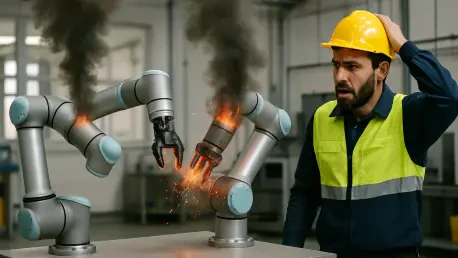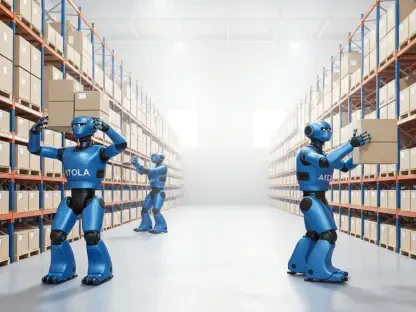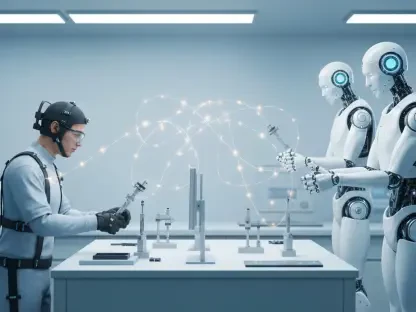In a landscape where technological innovation often promises groundbreaking change, the repeated downfall of a once-pioneering company serves as a stark reminder of the harsh realities of the robotics industry. Rethink Robotics Inc., a Boston-based firm that emerged as an early leader in collaborative robots, or cobots, has closed its doors for the second time in its nearly two-decade history. Founded in 2008 with a vision to make industrial automation accessible through affordable and user-friendly robots, the company introduced game-changing products like Baxter and Sawyer. Yet, despite its innovative spirit and substantial funding, persistent technical flaws and financial instability have led to its latest collapse. This development raises critical questions about the sustainability of niche players in a fiercely competitive market and the broader challenges of balancing innovation with execution.
A History of Innovation and Struggle
Early Vision and Initial Setbacks
Rethink Robotics began with a bold mission to transform industrial automation by creating robots that could work safely alongside humans. Established by robotics luminaries Rodney Brooks and Ann Whittaker, the company, originally named Heartland Robotics, rebranded in 2012 and launched Baxter, a two-armed cobot designed for ease of use in manufacturing and research settings. Later, the single-armed Sawyer followed, targeting similar markets with a focus on accessibility. Despite securing $150 million in funding, technical limitations, particularly in precision and repeatability due to series elastic actuators, plagued these products. These shortcomings made it difficult to compete with industry giants like Universal Robots, which offered more reliable solutions. By 2018, the company faced bankruptcy, marking its first major failure. The intellectual property was then acquired by HAHN Automation Group, which aimed to revitalize the brand with enhanced engineering, but market dynamics had already shifted, leaving little room for recovery.
Attempts at Revival and Repeated Failure
After the 2018 closure, hopes for a comeback surfaced when United Robotics Group (URG) took over, relocating operations back to the U.S. from Germany in 2024. This relaunch introduced a new lineup, including Reacher robot arms, Ryder autonomous mobile robots (AMRs), and Riser mobile manipulators (MMRs), intended to reestablish the company’s foothold in the cobot sector. However, these products encountered significant readiness issues, failing to meet performance and sales expectations. Concurrently, URG’s decision to withdraw funding exacerbated the situation, leading to another bankruptcy filing. By early this year, operations in the U.S. ceased entirely, marking the second shutdown. This repeated cycle of revival and collapse underscores a persistent inability to address core technical and strategic challenges, compounded by financial dependency on external investors who ultimately prioritized other ventures over sustaining the brand.
Market Dynamics and Future Implications
Competitive Pressures in the Cobot Sector
The cobot market, once a niche Rethink Robotics helped pioneer, has evolved into a highly competitive arena where even traditional industrial automation giants have entered with robust offerings. While the company was among the first to champion collaborative automation, its inability to refine product reliability allowed competitors to dominate. Over time, technical precision and scalability became non-negotiable standards, areas where Rethink consistently fell short. The market’s rapid evolution meant that delays in addressing these flaws translated to lost ground that proved impossible to reclaim. Moreover, the broader industry saw a shift as larger players, initially skeptical of cobots, adapted and introduced their own solutions, further crowding the space. This intense rivalry highlights how innovation alone cannot guarantee survival without consistent execution and adaptability to emerging trends.
Leadership Reflections and Industry Outlook
Leadership at Rethink Robotics faced immense challenges during this latest chapter, with CEO Julia Astrid Riemenschneider, who served from late 2024 to mid-this year, describing the ordeal as one of the most difficult in her career. Despite ramping up marketing efforts and participating in prominent industry events like IMTS in Chicago, the dual burden of underperforming products and investor withdrawal proved insurmountable. Her reflections reveal a deep disappointment in not being able to bolster American manufacturing automation, shedding light on the personal toll such closures take on dedicated teams. Meanwhile, market analysts at Interact Analysis suggest that despite a low point last year, the cobot sector is on the cusp of a new growth cycle. This indicates that while this company could not endure, the demand for collaborative automation remains strong, potentially paving the way for other innovators or future utilization of the company’s intellectual property, though its fate remains uncertain.
Lessons for the Robotics Industry
Looking back, the saga of Rethink Robotics offers critical insights for the robotics field, emphasizing that visionary ideas must be matched with operational excellence to thrive in a cutthroat market. The company’s closures reflect specific missteps in product development and strategic planning, rather than a rejection of the cobot concept itself. Financial reliance on parent organizations, as seen with URG’s funding cuts, also exposed vulnerabilities that smaller firms must navigate carefully. Moving forward, industry players might consider prioritizing incremental improvements over ambitious overhauls, ensuring products meet market-ready standards before launch. Additionally, fostering stable financial partnerships could mitigate risks of sudden investor pullbacks. As the sector anticipates growth in the coming years, these lessons from past struggles could guide emerging companies toward sustainable success, potentially redefining how collaborative automation shapes manufacturing landscapes.









